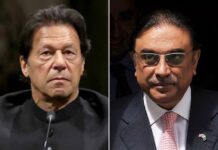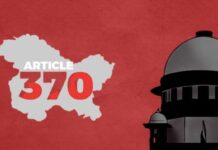The United States’ long-pending exit from Afghanistan is the latest in the series of inflection points in its decades-old bilateral ties with Pakistan. Given Pakistan is looking poised to control the state of affairs in Afghanistan with the ISI (Inter-Services Intelligence) chief reportedly acting as a mediator between competing sections of the Taliban, speculations are now settling as facts that Pakistan is indeed calling the shots. Besides, the plum share to the Haqqani faction (once referred to as the ISI’s “veritable arm” by Admiral Mike Mullen) in the newly installed power structure in Kabul only reiterates Pakistan’s strategic exaltation at least for the time being.
By Priyanka Singh
Speaking on the Taliban, Rex Tillerson during his tenure as the US Secretary of State once observed: “We may not win one but neither will you.” Contrary to Tillerson’s assessment, in the flux as it appears at the moment in Afghanistan, the Taliban are indeed looking triumphant and Pakistan is presiding over their victory over what PM Imran Khan considered was “shackles of slavery”.
Meanwhile, the US on the other hand, is justifying its exit as necessary and in doing so, it is calibrating to reflect the Taliban in a better light. Not too long ago, the Taliban were on the other side of the negotiating table with the US administration. By categorically blaming the ISIS-Khorasan, the administration has largely exonerated the Taliban from the ensuing violence and mayhem in Afghanistan, particularly in the Kabul airport attack in which 13 US soldiers were killed.
The ongoing regional chaos has thrown up oft-repeated albeit pertinent questions on the future course of US–Pakistan relations following decades of conflict in Afghanistan and Pakistan’s undisputed centrality to it. This is especially so as the Afghan flux witnesses shuffling geo-political alignments where Pakistan is now seen on other side of the fence with China, Russia and the resurgent Taliban militia—all of whom have invariably had adversarial equations with the US either in present or past.
The Run-up
US–Pakistan ties appeared to be somewhat strained in the run-up to the fall of Kabul on 15 August 2021. Prime Minister Imran Khan’s perceptibly exasperated speech in the National Assembly on 30 June was a precursor to an impending rough patch in the US–Pakistan ties. Khan not only attacked Pakistan’s decision to join the war on terror in 2001 at the US’s behest but also passionately narrated how he contested the move in the Musharraf era. Prior to this, in an Op-ed published in The Washington Post, Prime Minister Imran Khan noted: “If Pakistan were to agree to host US bases, from which to bomb Afghanistan, and an Afghan civil war ensued, Pakistan would be targeted for revenge by terrorists again. We simply cannot afford this. We have already paid too heavy a price.” These significant proclamations occurred just before the US exited the Bagram air base—the “centrepiece” of the war on terror marking the onset of a complete withdrawal of US forces from Afghanistan.
Notwithstanding, of late, there have been frequent reciprocal official exchanges between the two sides—at the level of foreign ministers, Intelligence Chiefs, the National Security Advisors including a conversation between the Pak Army Chief and the US Defence Secretary. US Special Envoy on Afghanistan, Zalmay Khalilzad, and Bill Burns, the CIA (Central Intelligence Agency) Director too visited Pakistan in the period leading to the August withdrawal. Despite some high-level interactions on the approaching deadline, there has been perceptible unease in the bilateral equations. Prime Minister Imran Khan observed that the US “really messed it up” in Afghanistan and that the US finds Pakistan useful in clearing up the mess in the neighbourhood.
In the ongoing chaos, Secretary of Defence Lloyd Austin in his phone call to Pakistan Army Chief Qamar Javed Bajwa has “expressed his interest in continuing to improve the US-Pakistan relationship and build upon our multiple shared interests in the region.” However, it is worth noting that President Biden has not established a direct contact with Khan even through a critical phase when American forces were on the verge of quitting their battlefield of 20 years in which Pakistan was playing a frontline role. National Security Advisor, Moeed Yusuf’s comments on President Biden not making a phone call to Prime Minister Imran Khan received added traction in the media circles. Based on the regional undercurrents and a surrounding grim situation, a prominent political pitch voiced in Pakistan has been that US has left Afghanistan to Pakistan yet again in a repeat of the strategic desertion of the country after Soviet forces withdrew in the late 1980s.
Pakistan and Afghanistan: From Cause to Cure and Back
Pakistan’s logistical uniqueness vis-à-vis supply routes made it the fulcrum of American Afghan scheme. Immediate proximity to Afghanistan defined US’s unflinching incline towards Pakistan without which it was hard to imagine an “effective Afghan resistance”. While the US had billions to support their war effort, it was the logistical wherewithal provided by Pakistan that gave the US operations a critical edge to overthrow the Soviets. Similarly, the use of Pakistani airspace in US’s counter-insurgency operations has been pivotal in the war on terror during decades of association (albeit with gaps) on Afghanistan, making it a key determinant of US ties with Pakistan both in the pre and post 9/11 era. Both sides are sensitised of mutual leverages which are invariably used to tilt a favourable balance. The culture of US booties in return for Pakistan’s support on Afghanistan, has deeply penetrated the Pakistani military-politico system as well.
Pakistan is the incubator of the current Afghan problem. During the 1970s through the 1980s, the Mujahideen resistance against the Soviet forces were housed and trained in Pakistan at the US’s behest. Post-Soviet exit, the idle Mujahideen got educated and indoctrinated in the Saudi-funded educational institutions in the country’s north. Most of those who got out of these madrassas now constitute the top brass of the contemporary Taliban. The seeds of Taliban resistance and ideology as it manifests today were, therefore, generated in Pakistan. At the commencement of the War on terror in October 2001, irrespective of its frontline status, Pakistan continued to shelter the Taliban escaping the US-led NATO (North Atlantic Treaty Organization) allied forces. This was likely known to the Bush Administration who chose to ignore in order to claim initial success. Having made major gains in neutralising the Al Qaeda (the primary adversary), the US was later pitched in a battle with a Frankenstein—the Taliban—and in doing so it was heavily relying on a country which practically nurtured this outfit.
Of Past and Future
As pointed out earlier, in the aftermath of the Soviet withdrawal from Afghanistan, Pakistan was grappling with the after-effects of the Pressler amendment which required Presidential certification for continuing aid—economic as well as military. In 1990, President George H.W. Bush refused to certify Pakistan under “interagency recommendation” as a result of which US$ 564 million was put to freeze. At this juncture, the US administration’s hardened position required Pakistan to destroy its existing nuclear arsenal. The impact of the Pressler lash was acutely felt in Pakistan affecting its broader strategic equations with the US.
At present, the Pakistan Army chief has already expressed concerns over some kind of US sanctions in the aftermath of the Afghan mayhem.18 Hounded by shortfalls on the FATF (Financial Action Task Force) compliance, US sanctions if any, may aggravate Pakistan’s prevalent economic woes. However, this time around, active involvement of Russia, China and Iran in the current geo-political scene may partially help dilute problems for Pakistan against any US-initiated contingency.
Economy of Strategic Partnership
US–Pakistan ties have an intrinsic tenet of dependency that has forged an economy in fostering and maintaining their strategic partnership. While US has historically banked upon the salience of Pakistan’s geo-politically relevant location, Pakistan has relied on US economic assistance—both military and non-military, and diplomatic waivers despite its reckless track record in promoting terrorism and clandestine nuclear activities. The bilateral adhesion based on give and take, exercising mutual leverages and the willingness to partner in contingencies has sustained the ties against oddities of crossing over strategic allegiance by both the US and Pakistan, vis-à-vis India and China respectively.
Pakistan has had few stark interests in keeping the US engaged and serve its goals in Afghanistan. Both associations with the US on Afghanistan were primarily under military regimes—Zia ul Haq and Pervez Musharraf—that wanted legitimacy and resources to keep the domestic situation under control. The US support in return for Pakistan’s services on Afghanistan, therefore, remained crucial. Similarly, sustained strategic cooperation, howsoever unfruitful it may have been, at a point drove the US to offer Pakistan a mammoth humanitarian aid assistance as envisaged under the PEACE (Pakistan Enduring Assistance and Cooperation Enhancement Act) Act of 2009.
Going by this logic, therefore, the current frost is only a phase that too shall pass before the two countries huddle up for some objective. Pakistan’s geography will be an enabling factor for US’s geo-political designs in Asia—it must keep it engaged for its steadfast proximity to China, now Russia and Iran (to an extent), and the deep leverages Islamabad is likely to be armed with vis-à-vis the newly installed Taliban regime in Afghanistan.
Even as Sino-Pakistan proximity peaked, it was not without the US consent that Pakistan was able to avail an IMF bailout of US$ 6 billion to cope up with mounting economic distress. In the fiscal year 2019–2020, the US was Pakistan’s top donor on budget, grant-based assistance, something that does not aggravate Pakistan’s debt burden or adversely affect the balance of payments.
This article first appeared in www.idsa.in and it belongs to them.












